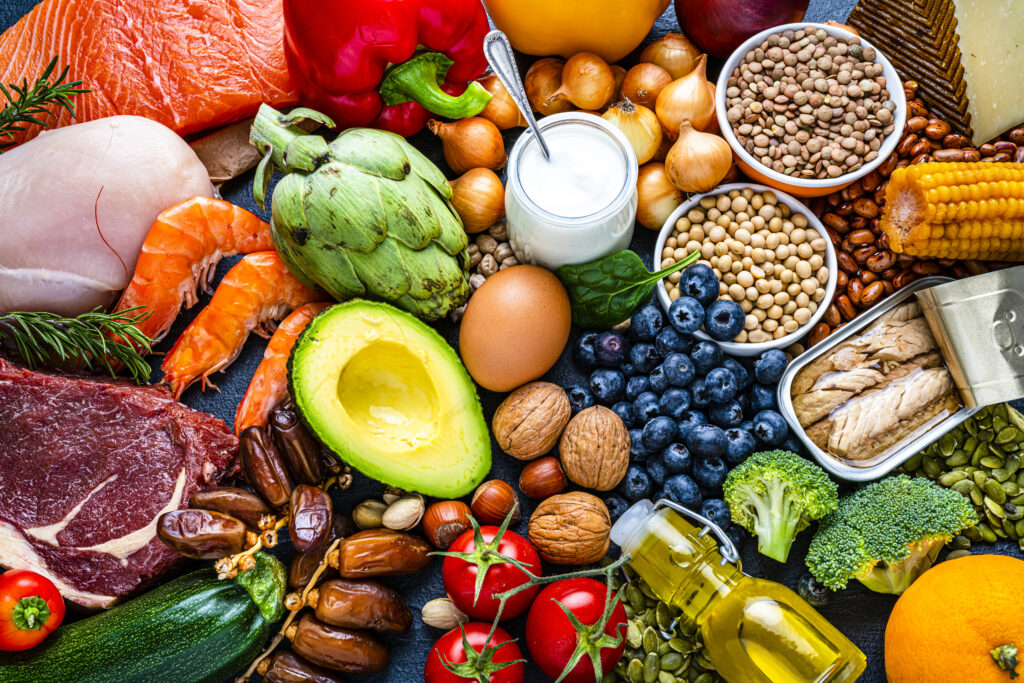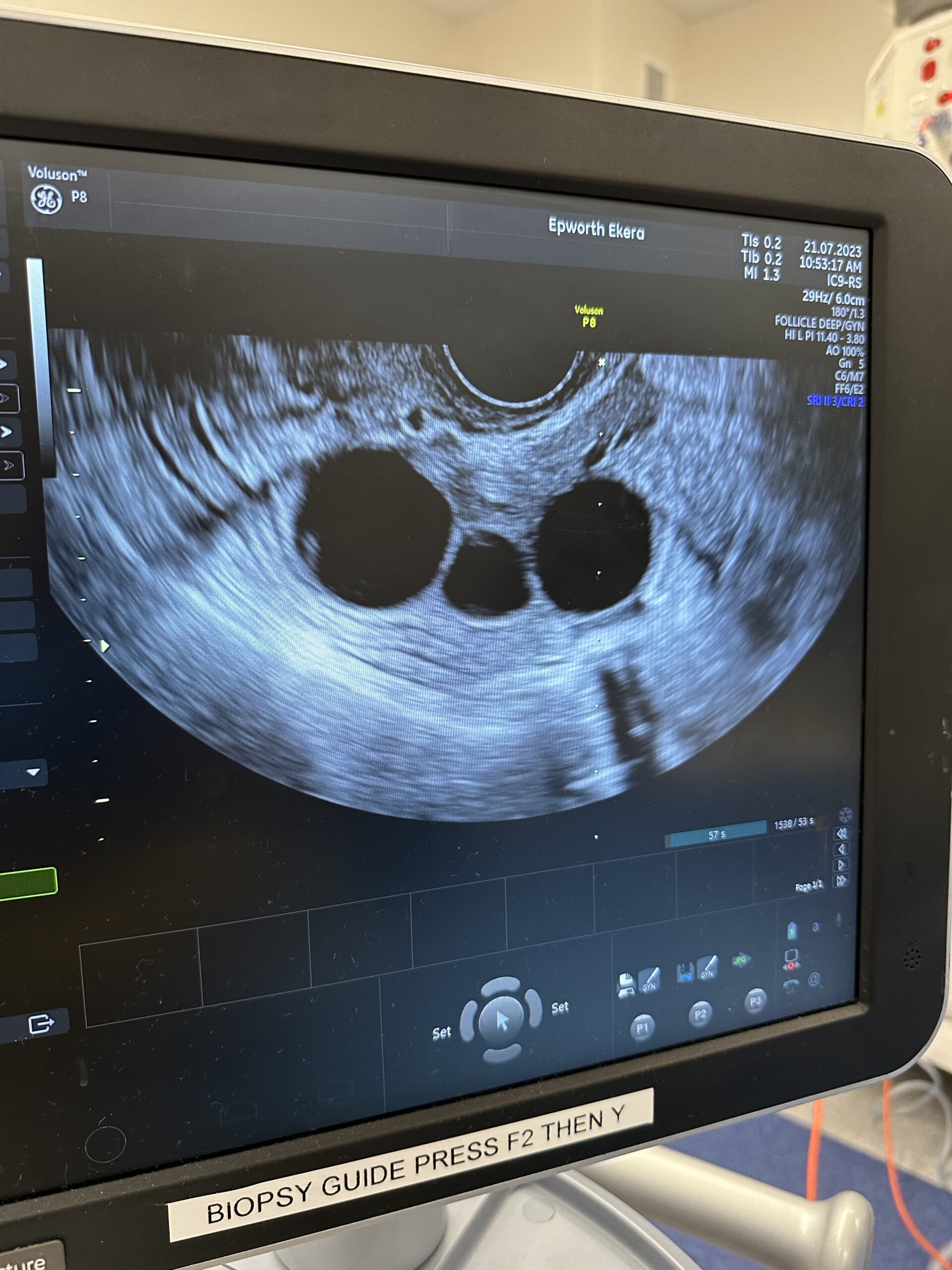Fertility is largely influenced by the quality of both eggs and sperm. Age is the biggest determinant of egg quality1, but other factors such as diet, weight, physical activity and exposure to toxins (including illicit drugs or medications) also play a role. The good news is that whilst you cannot modify your age, there are things that you can do to improve egg quality and your chances of getting pregnant.
This involves making changes (if needed) to areas of your life that can influence various biological processes in the body – fertility included. With the proper modifications, you can protect your eggs from the harm caused by these factors and increase your likelihood of conceiving.
Why is age such a big factor?
Fertility starts to decline at the beginning of a woman’s 30s, but the decline is more rapid after age 35.1 This is because women are born with a lifetime supply of eggs – around 1-2 million – and this reserve gradually decreases over time. Egg quality also declines with age as the DNA in eggs becomes more susceptible to damage.
Eggs of lower quality are less likely to fertilise and develop into an embryo, affecting the chances of pregnancy. Additionally, older eggs are more likely to be affected by chromosome imbalance, which is associated with difficulty falling pregnant, an increased risk of miscarriage and a higher incidence of children born with a chromosome disorder (e.g. Down Syndrome).2
Unfortunately, once an egg’s DNA is damaged or the egg has an incorrect number of chromosomes (we call this aneuploidy), it cannot be reversed or repaired. For this reason, it’s important to protect your egg quality as much as possible.
Tips to improve your egg quality
Smoking
Women who smoke or are exposed to second-hand smoke often face delays in conceiving. Smoking damages egg DNA, which reduces fertility and increases miscarriage risk.3 It also increases the chance of ectopic pregnancy and makes embryo implantation harder, while increasing the risk of pregnancy complications.4 Therefore, avoiding smoking and second-hand smoke is crucial when trying to conceive and during pregnancy.
Additionally, researchers are still learning about all the risks of e-cigarettes (vapes) on conception and pregnancy. At this stage, no amount of vaping is considered safe when trying to conceive.
Alcohol
If you’re trying to conceive, drinking alcohol can affect your ability to get pregnant and stay pregnant. Some studies suggest that even low to moderate alcohol consumption is associated with reduced fertility.5 Drinking alcohol can alter hormone levels and disrupt the menstrual cycle and the ability to ovulate, therefore reducing the chances of conceiving. So, cutting down or cutting out alcohol can improve your chances of falling pregnant, along with helping you embrace a healthier lifestyle.
Coffee/caffeine
Some studies have shown reduced fertility and increased risk of miscarriage with excessive caffeine consumption.6 Most studies also indicate that the risk of infertility rises with higher levels of caffeine intake. Unfortunately, a safe daily amount of caffeine has not been established. For this reason, we recommend limiting your intake to one caffeinated drink per day (<80–100 mg of caffeine). If you can go without all together, even better!
Illicit drugs
Taking recreational drugs reduces the chances of becoming pregnant and having a healthy baby. For instance, cannabis and opioids are known to disrupt normal hormone production, leading to problems with ovulation and menstrual cycle disturbances.7 Additionally, stimulants such as cocaine and crystal meth have been linked to higher rates of miscarriage.8 Therefore, avoiding illicit drug use is one of the simplest ways to preserve your fertility.
Extreme exercise
Over-exercising can hinder ovulation and hormone production – specifically progesterone production, which is critical in supporting a pregnancy as it helps to thicken the lining of the uterus (needed for embryo implantation). Excessive exercise has also been linked to miscarriage.9 Vigorous exercise should not exceed 4 hours a week. However, lighter activities, such as walking and Pilates, are not limited.
Diet 
The Mediterranean diet is often recommended for individuals undergoing in vitro fertilization (IVF) due to its potential benefits for reproductive health – and this may include egg quality. This diet emphasises the consumption of whole foods, including fruits, vegetables, whole grains, legumes, nuts, fish and healthy fats like olive oil, while limiting processed foods, red meat and added sugars.
Research suggests that adherence to the Mediterranean diet may improve fertility outcomes by promoting a healthy weight, reducing inflammation and optimising insulin sensitivity, all of which can positively influence ovarian function and embryo quality.10,11
Maintaining a healthy weight
Being underweight or overweight is associated with reduced pregnancy rates. This is because carrying too little or too much weight can disrupt the balance of hormones in your body, leading to ovulatory issues and irregular periods, along with an increased risk of miscarriage. Even if a woman has a regular cycle, fertility may still be reduced compared to women within the healthy weight range (a body mass index between 18.5 and 25).
Weight loss in overweight people doesn’t have to be drastic to improve fertility. Research has shown that even a modest drop in body weight (5–10%) can increase the chances of pregnancy – not to mention many other health benefits, such as a reduced risk of conditions like diabetes and heart disease, and a lower rate of pregnancy-related complications.12 Weight training and improving your lean body mass is also crucial for optimising your metabolism and reducing insulin resistance.
Weight loss is difficult, but your care providers can help you navigate the weight management journey. Talking to your GP or fertility specialist about weight is a great first step. We’ll make sure you have the support you need.
Medical conditions and medications
Conception is most likely to occur when you’re in good health. Untreated medical conditions, especially hormonal disorders (e.g. thyroid issues) and gynaecological conditions (e.g. endometriosis), can hinder fertility. It’s essential to manage these conditions before trying to conceive. Additionally, ensure that any prescribed medications are safe to take during conception and pregnancy by discussing these with your fertility specialist.
Night shift work
Night shift workers may experience reduced fertility because disrupted or insufficient sleep can interfere with the body’s circadian rhythm, leading to hormonal imbalances. Research on patients undergoing IVF has shown that women working night shifts tend to produce fewer eggs suitable for embryo development.13 Meanwhile, other studies have linked shift work to higher miscarriage rates.14 If possible, avoid night shift work and stick to a regular shift schedule rather than rotating between day and night shifts, as consistency can help reduce the impact on hormone levels.
Supplements for improving egg quality
In addition to lifestyle changes, certain supplements are often recommended. While evidence supporting their impact on egg quality and IVF success rates is limited, some studies suggest potential benefits, whereas others show no significant improvements in fertility outcomes. However, when taken at recommended doses, these supplements are generally considered safe.11
For instance, antioxidants like vitamin E and coenzyme Q10 may enhance IVF outcomes by reducing DNA damage and improving egg quality, particularly in older women or those with diminished ovarian reserve. Other commonly suggested supplements include vitamin D (especially for those with a deficiency) and omega-3 fatty acids.11
Additionally, all women trying to conceive should take a supplement containing at least 400 mcg of folic acid, which is crucial for DNA synthesis and reducing neural tube defects, along with 150 mcg of iodine to support thyroid function.11
Small changes can lead to big results
Simple yet impactful lifestyle changes go a long way towards preserving egg quality, preventing egg damage and improving your overall fertility. By addressing these modifiable factors and prioritising your overall wellbeing, you can boost your chances of conception and a healthy pregnancy.
If you’re ready to explore your options for having a baby or are concerned about your fertility, you can make an appointment with one of our specialists by calling (03) 8080 8933 or by booking online.
References
- Better Health Channel. Age and fertility [internet]. Victoria (AU): Better Health Channel; 2023 [updated 2023; cited 2024 Oct]. Available from: https://www.betterhealth.vic.gov.au/health/conditionsandtreatments/age-and-fertility ↩ ↩
- Winship A, Stringer J, Liew S et al. The importance of DNA repair for maintaining oocyte quality in response to anti-cancer treatments, environmental toxins and maternal ageing. Hum Reprod Update. 2018;24(2): 19–134. doi: https://doi.org/10.1093/humupd/dmy002. ↩
- Pineles BL, Park E, Samet JM. Systematic review and meta-analysis of miscarriage and maternal exposure to tobacco smoke during pregnancy. Am J Epidemiol. 2014;179(7):807–23. doi: 10.1093/aje/kwt334. Epub 2014 Feb 10. PMID: 24518810; PMCID: PMC3969532. ↩
- Better Health Channel. Pregnancy and smoking [internet]. Victoria (AU): Better Health Channel; 2022 [updated 2022; cited 2024 Oct]. Available from: https://www.betterhealth.vic.gov.au/health/healthyliving/pregnancy-and-smoking ↩
- Fan D, Liu L, Xia Q et al. Female alcohol consumption and fecundability: a systematic review and dose-response meta-analysis. Sci Rep. 2017;7(1):13815. doi: https://doi.org/10.1038/s41598-017-14261-8 ↩
- Lyngsø J, Ramlau-Hansen CH, Bay B et al. Association between coffee or caffeine consumption and fecundity and fertility: a systematic review and dose-response meta-analysis. Clin Epidemiol. 2017;9:699–719. doi: 10.2147/CLEP.S146496. PMID: 29276412; PMCID: PMC5733907. ↩
- The Society of Obstetricians and Gynaecologists of Canada. Substance use and fertility [internet]. Ontario (CA): The Society of Obstetricians and Gynaecologists of Canada; 2024 [cited 2024 Oct]. Available from: https://www.pregnancyinfo.ca/before-you-conceive/fertility/substance-use-and-fertility/ ↩
- Smid MC, Metz TD, Gordon AJ. Stimulant use in Pregnancy: An Under-recognized Epidemic Among Pregnant Women. Clin Obstet Gynecol. 2019;62(1):168–184. doi: 10.1097/GRF.0000000000000418. PMID: 30601144; PMCID: PMC6438363. ↩
- Barakat R, Zhang D, Silva-José C et al. The influence of physical activity during pregnancy on miscarriage-systematic review and meta-analysis. J Clin Med. 2023;12(16):5393. doi: 10.3390/jcm12165393. PMID: 37629435; PMCID: PMC10455409. ↩
- Hart RJ. Nutritional supplements and IVF: an evidence-based approach. Reprod Biomed Online. 2024;48(3):103770. doi: 10.1016/j.rbmo.2023.103770. ↩
- Yang J, Song Y, Gaskins AJ, et al. Mediterranean diet and female reproductive health over lifespan: a systematic review and meta-analysis. Am J Obstet Gynecol. 2023;229(6):617-631. doi: 10.1016/j.ajog.2023.05.030. ↩ ↩ ↩ ↩
- Haase CL, Varbo A, Laursen PN et al. Association between body mass index, weight loss and the chance of pregnancy in women with polycystic ovary syndrome and overweight or obesity: a retrospective cohort study in the UK. Hum Reprod. 2023;38(3):471–481. doi: https://doi.org/10.1093/humrep/deac267 ↩
- Liu Z, Zheng Y, Wang B et al. The impact of sleep on in-vitro fertilization embryo transfer outcomes: a prospective study. Fertil Steril. 2023;119(1):47–55. doi: 10.1016/j.fertnstert.2022.10.015 ↩
- Mínguez-Alarcón L, Souter I, Williams PL, et al. Occupational factors and markers of ovarian reserve and response among women at a fertility centre. Occup Environ Med. 2017;74:426-431. doi: 10.1136/oemed-2016-103953 ↩


